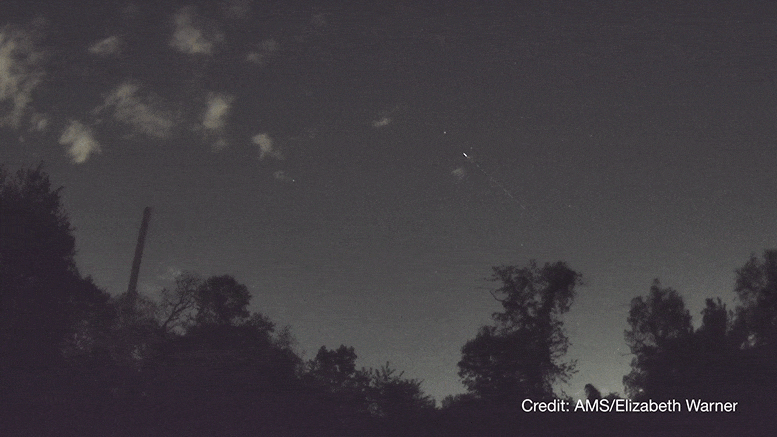Nisan ve Mayıs boyunca aktif olan eta Aquariid meteor yağmuru, saatte 120-160 meteor içeren etkileyici bir patlama yılıyla 5 Mayıs’ta zirveye ulaşacak. Dolunayın parlaklığına rağmen, Dünya’nın Halley Kuyruklu Yıldızı’ndan gelen enkazla karşılaşmasının neden olduğu duşun ateş topları, onu izlemeye değer kılıyor. Kredi bilgileri: AMS Elizabeth Warner
5 Mayıs sabahı zirveye ulaşan eta Aquariid meteor yağmuru, saatte 160’a varan meteorla bir patlama yılı vaat ediyor. Dolunaya rağmen parlak ateş topları, özellikle Güney Yarımküre’de sabah 3-4 ile şafak arasında izlenmeye değer kılıyor.
Eta Aquariid meteor yağmuru, Nisan ve Mayıs boyunca aktiftir ve 5 Mayıs’ın şafak öncesi saatlerinde zirveye ulaşır. Bu yıl, saatte 120-160 meteorun beklendiği bir patlama yılı olarak özellikle etkileyici olabilir.
Bill Cooke, “Meteor yağmuru, saatte 50-60 meteorla normal yağmura benzer” dedi.[{” attribute=””>NASA’s Meteoroid Environments Office at the agency’s Marshall Space Flight Center in Huntsville, Alabama. “An outburst is like a thunderstorm, with greater than normal meteor activity expected. A meteor storm is like a tornado, where meteor rates are over one thousand per hour.”

C-141 Kuiper Airborne Imagery of Comet Halley (New Zealand Expedition). Credit: Photo taken with equipment designed, mounted on the headring and operated by the Charleston (South Carolina) County School District CAN DO Project
Despite the full moon lighting up the sky and washing out the faint meteors, this year’s eta Aquariid meteor shower is not one to miss. In terms of producing fireballs, NASA camera data places it #6 among meteor showers. These bright fireballs are caused by Earth running into a dense stream of debris from Comet Halley, a lot of which was ejected more than 3,000 years ago. Moving at 148,000 mph, some of these fireballs leave glowing “trains” in their wake that last for several seconds to minutes.
How to View
The eta Aquariid meteor shower is viewable in both the Northern and Southern hemispheres, with higher rates of visibility to observers in the Southern Hemisphere. This is due to the radiant’s location in the constellation of Aquarius. Meteors will be observable after midnight, but the peak times are 3-4 a.m. until dawn.
Regardless of your geographic location, you’ll want to find an area well away from city lights for best viewing. Give yourself about 30 minutes in the dark for your eyes to adapt – this means not looking at your phone. Look AWAY from the moon and take in as much sky as possible.

A composite image showing several Eta Aquariid meteors from the NASA All Sky Fireball Network station in Mayhill, NM on 6 May 2013. Credit: NASA
The next major meteor showers will be the Perseids in August, and the sister show to the eta Aquariids, the Orionids in October.
But there’s plenty more skygazing to do this month. Check out What’s Up in May from NASA Jet Propulsion Laboratory:
Mayıs 2023’te gökyüzü izlemede öne çıkan bazı olaylar nelerdir? Venüs yılın en yüksek noktasına akşam gökyüzünde ulaşırken, Jüpiter bazı ABD’li gözlemciler için Ay’ın arkasında kayboluyor. Artı, Güney Yarımküre’nin gökyüzünde Kuzey’dekilerle karşılaştırıldığında bazı önemli farklılıklar. Kredi: NASA Jet Tahrik Laboratuvarı

